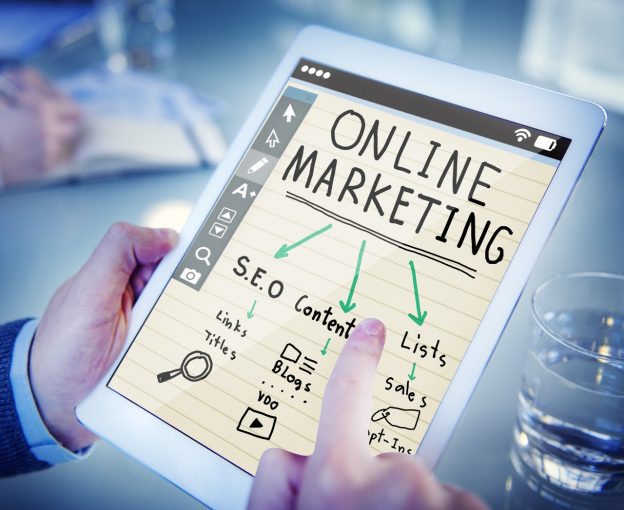If you’re wondering whether native ads can fit into your content marketing strategy, this is the easiest answer I can ever give: “Absolutely!”. In fact, these two are a perfect match. If your question is more along the lines of “How can I make native ads part of my content marketing strategy?”, read on for the details.
But first, more on this “perfect match” dynamic. If you look at high-quality native ads, they all basically guide the visitor towards your highly valuable content. In other words, if the visitor clicks on your native ads, they’ll end up checking out the quality content on your website.
Native advertising and content marketing are a perfect match. Why? Both are based on promoting high-value content.Click To TweetAnd what is content marketing again? It’s a strategy where you create a ton of goodwill, trust and adoring fans that love to buy from you. How do you do this? By publishing a lot of highly valuable content. Are you starting to see the commonalities with native advertising?
If you’re doing content marketing, you have already laid the groundwork for making the most out of native ads. All you have to do is point those ads to your highly valuable content.

But wait, if your content is already great, why do you need “native ads”?
Here’s where the partnership becomes more apparent. As it turns out, it’s no longer enough to merely “put your awesome content out there”. A while ago, all you had to do was publish lots of good content.
The adage “Build it and they will come” actually worked in the early days. Nowadays, this is simply not enough. You actually have to push that process along by promoting your content. While promoting your content using other channels can work decently, it is native ads that are best suited to this purpose.
Let’s make this clear first – what do we mean by native ads?
Some marketers incorrectly use the term “native ads” to refer to advertorials. An advertorial requires the advertiser to publish a full editorial on the website of a given publisher. Let’s say that the advertiser is IBM, and the publisher is Fortune.
If IBM publishes an advertorial on Fortune, it will appear just like a regular Fortune story, and it will actually be hosted on the Fortune.com website. The advertorial looks exactly the same as that publisher’s regular editorial content, and it’s hosted on the publisher’s website. The only difference from regular articles is that it says “sponsored by IBM”, or whoever is sponsoring that advertorial.
When we talk about native ads, we are referring to the kind of native ads you see served by a native ad platform like Outbrain or Taboola. Oftentimes, this is where you have a recommendation engine that recommends related or relevant content. There is typically a listing of “recommended reading” where each recommended item is represented with a thumbnail and a teaser.

Let’s say that you’re reading TechCrunch. Most of the recommended pieces link to content by TechCrunch itself. Some of them, however, are “native ads” and link to content on third party sites (content from advertisers). The native ad items linking to third-party advertisers will look and feel exactly the same as the items linking to internal TechCrunch content.
Fitting native ads into your content marketing strategy
You don’t want to view native advertising as this isolated thing you do to “purchase more traffic”. Instead, you want to look at native advertising as an extension of your content marketing. Perhaps even an integral part of your “content marketing strategy”.
It’s kind of like how you write a blog post, and then you write a tweet about your brand new post and how it’s so very informative. Now consider this. Many of your Twitter subscribers will be there because they like the fact you share links to informative content.
So when you write great content and share it on Twitter, your Twitter presence benefits from it. But your content benefits from it being promoted on Twitter as well. Do you see how there’s a synergistic relationship going on there?
It’s similar (but different) with native advertising. Think about it: what does it take to get the most out of your native ads? Ponder on this for a while and you’ll start to see how it relates to content marketing.
To get the most out of native advertising, you need to promote content that people want to click and read. You need to match the experience people are accustomed to. When they see your native ad on their favorite blog, the content being advertised needs to provide a similar value proposition and “feel similar”.
So you’re choosing your content to fit the needs of highly-effective native advertising. That, in turn, brings you a massive amount of new people to your content. Then, you can convert these people to email subscribers, Twitter followers, etc.

Native ads let you reach different and new audiences
Choosing your audience when considering native ads is similar to choosing an audience for your general content marketing. You need to identify your target audience, find out what they care about and where you can reach them best.
Native ads are the perfect supplement to your content marketing, they let you reach new and different demographics.Click To TweetKeep in mind that different demographics prefer different content. Different native ads will need to promote different types of content.
Doing it right – things to keep in mind
The single most common mistake you will see with marketers is that they become overzealous when applying new marketing strategies. This results in disappointment and failure, or additional impatience and even more mistakes.
You want to take your time to do native advertising right, so here are some guidelines on how to do just that:
– Use high-quality content – you already use high-quality content as part of your content marketing strategy. Make sure this is also true with content that you promote using native ads.
– Avoid overly promotional language – Refer to the mantra “educate first, sell second”. You want your native ad content to give a ton of value upfront.
Avoid the temptation to make it into a pitch for your products and services. Find a way to naturally and subtly transition into mentioning your products and services at the end of your content, but only after you’ve delivered several pages of high-quality content.
– Focus on providing value – you want to entertain, educate or inform your readers. Just like you do with the rest of your content marketing.
– Stay true to your business goals – you need to carefully plan and align every part of the tactic. You need to do it in a way it can fit into your overall business goals.
– Stay true to your brand – every piece of content you put out there should resonate with your company culture and brand voice. Don’t forget that.

Native advertising can be easy, let us help
If you want an easy way to get started with native advertising, I have some good news for you. No, scratch that, I have two great things to share with you.
– As great as native advertising is, there is something even better. Native ads placed inside of popular and trusted newsletters. All the smart marketers are getting in on this and soon, all your competitors will do it, too.
– We’ve worked really hard to produce a super intuitive native advertising platform that lets you run native ads in minutes. It might just be the easiest way to get into native advertising.
Give AdMailr a try today. Creating an account is easy and completely free. You’ll be able to run native ads in no time. And better yet, it will be in the highest converting medium of all – email newsletters.












